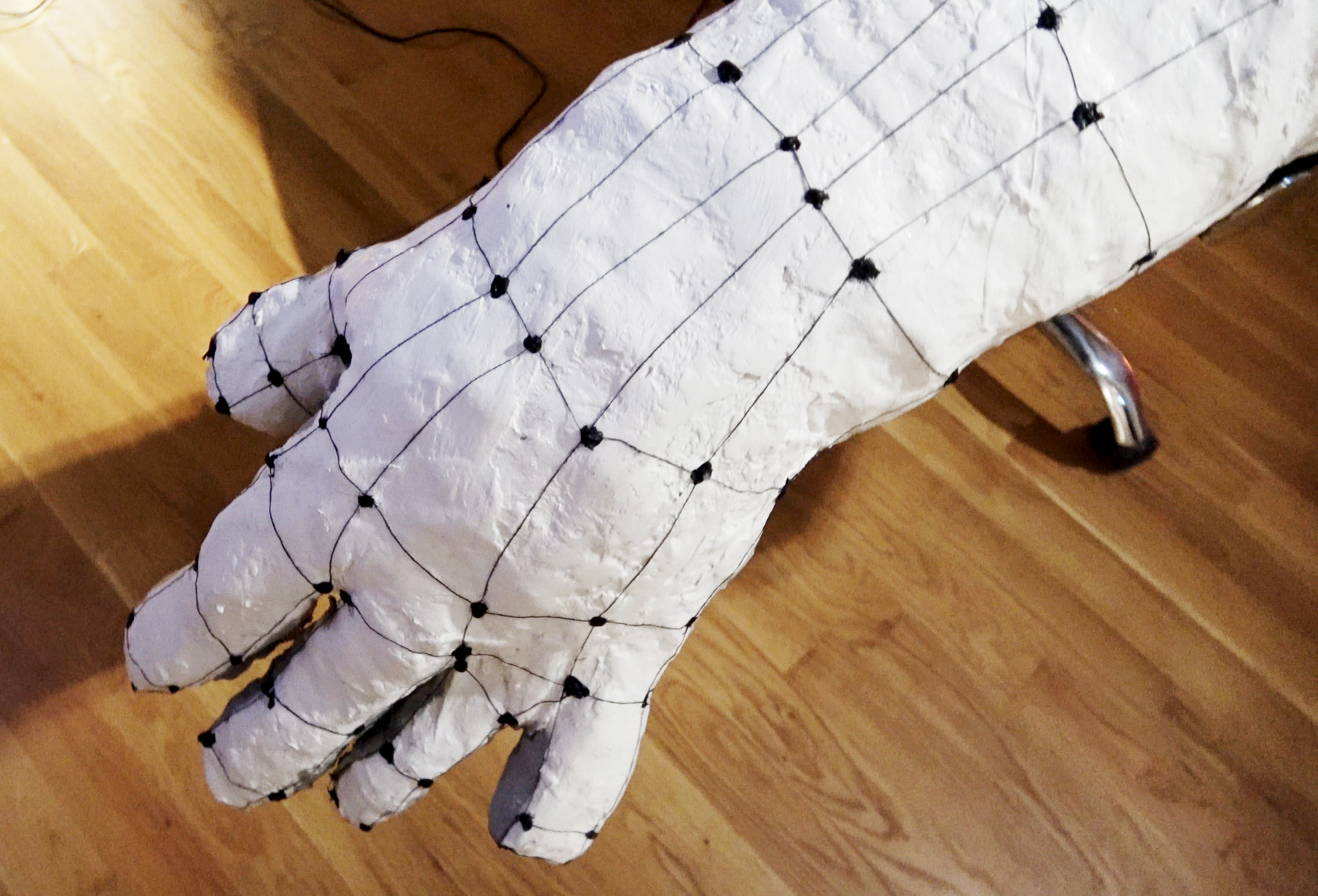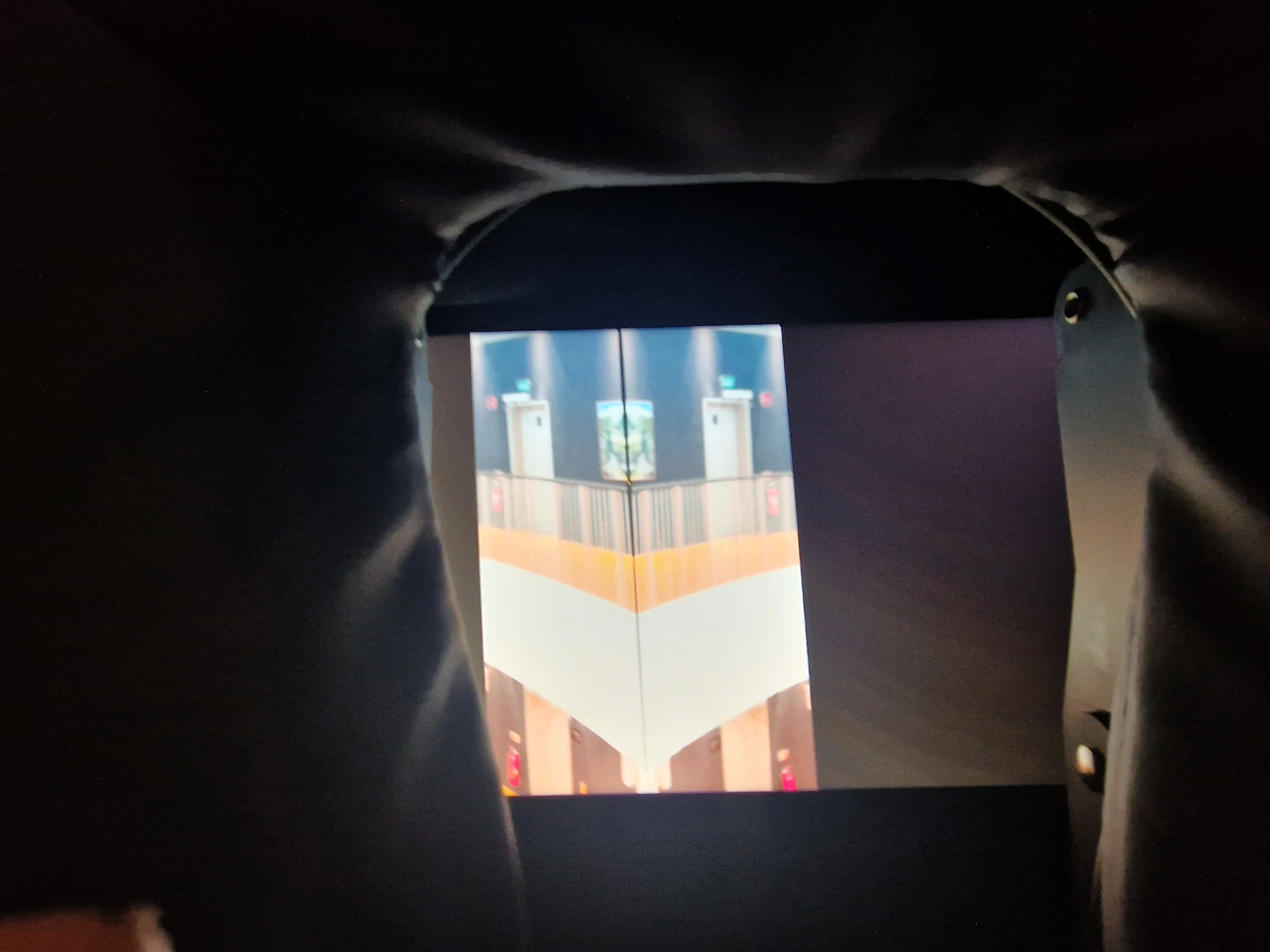



Lisa Torell
works
biography
other works
contact
________________________________________________________________________________________________________
[Phantom] Reality
at
CHOREOGRAPHY OF CHANGE
curator: Hampus Bergander
Konstmusweet i Norr, Kiruna
November 17, 2023 - January 7, 2024
Andreas R. Andreasson, Sissel M. Bergh, Kajsa Dahlberg, Simo Kellokumpo and Thomas Westpal, Olof Marsja, nabbteeeri and Lisa Torell.
How does change happen in society? This is the question posed by seven artists/duos whose widely differing materials and techniques are united by a desire to use their art to suggest how change can be achieved. In video, performance, drawing, text, sculpture and installations, they provide examples of how to understand and advocate for change and disruption. Many of the artists are interested in activism, and in different ways ask questions about identity, historiography, industrialisation, the limits of the body and the human impact on the environment.
The exhibition also touches on conflicts between structural oppression and speculative future scenarios and makes visible the counter-actions proposed by the artists.
Central to the exhibition is a sensitivity to relational knowledge systems and innovative knowledge production through artistic research and other research-based methods. For example, Simo Kellokumpu and Thomas Westphal's work EXOXE takes the viewer on a journey that challenges conventional views of how the human body can be perceived in space. Lisa Torell's installation [Phantom] Reality consists of two site-specific works Embodied Phantom Hand and Generation Calm. Her starting point is the human capacity for experience and how technological development drives and changes the boundaries between people, objects, implants, prostheses and other aids. She calls them 'negotiation tools'. The film Elmie (Southern Sami for sky, air, storm) by Sissel M Bergh, is part two of the knowhowknow series on how to perceive the world and different forms of knowledge. It is a documentary poem about sky, air, breathing, mountains, birds and wind power, and is based on the large-scale expansion of the wind power industry in the marshes and mountains from Smøla to Nærøy on the Trøndelag coast in Sápmi. So does her large drawing (What they did) to the Marshes and Mountains. An inherited old leather belt takes on significance for Olof Marsja in the installation Månskensfärd. Based on an object, he tries to circumvent the essentialism often associated with minority groups. Suggestions on how change can be staged using an unexpected film development process are presented in the film Seaweed Film by Kajsa Dahlberg, and in nabbteeri's work Plantationoseni it is suggested how cooperation with non-human organisms can be created to counteract man's environmental footprint. In a similar way, Andreas R Andersson's Sanctuary makes visible the pollution of industry and the traces it leaves behind, and where the current action plans advocated by authorities and companies seem to take us.
-----
[Phantom] Reality
Consisting of two installations, Embodied Phantom Hand and Generation Calm, a kind of video sculpture furniture or transformation tools where the viewer automatically becomes part of the installations: they are site-specific and produced for the two different floors and locations where they are placed.
Both films take place both in the physical space around the museum visitor and in a virtual space. The interface for the virtual space is the gray grid, the wire/web-based environment that surrounds the films on the screens and that the viewers also has behind them in Embodied Phantom Hand. When creatures, objects and people are constructed digitally for games, for A.I. movies etc. they are created using a wireframe structure.
What unites both is that in different ways they are attempts created to serve as a philosophical and physical tool to reflect our existence and agency, in a world that is simultaneously falling apart. Embodied Phantom Hand seeks to embody and embrace, giving us 'tangible' tools to connect physically with a world in chaos. Generation Calm aims to dissolve, to create rupture, interruption and perspective. The film is edited to glitch, and glitch. I have been thinking about our senses: hearing, touch and sight and what they do for our understanding and what it means to separate them. I have thought about moments, about opening your eyes and trying to understand and then blinking, and opening your eyes again and seeing another reality. Cutting brings together and dissolves at the same time.
From the fact that historically and until about now we have based memories and experiences mainly on physical places, where we ourselves have been present, we will probably base more experiences on someone else's presence and eyes in the future. In the process of this site-related work, it has been important that I tried this and had a distance. That is, that someone else was filming, that it was someone else's breath and footsteps, someone else's guidance that supported the approach to the place.
Thank you Hampus Bergander (curator of the exhibition) for filming, breath and footsteps. Thank you Clare Roberts at Generation Calm for the guided meditation.
Choreography of Change is about change taking place in society, interpreted by seven artists/duos. They are united by a desire to use their art to suggest how change can come about. In video, performance, drawing, text, sculpture and installations, they provide examples of how to understand and advocate for change and disruption. Several of the artists are interested in activism, and in different ways ask questions about identity, history, industrialization, the limits of the body and the impact of humans on the environment. The exhibition also touches on conflicts between structural oppression and speculative future scenarios and makes visible the counter-actions proposed by the artists. Central to the exhibition is a sensitivity to relational knowledge systems and innovative knowledge production through artistic research and other research-based methods.
In their work EXOE, for example, Simo Kellokumpu and Thomas Westphal take the viewer on a journey that challenges conventional views in relation to how the human body can be perceived in space. Lisa Torell's installation [Phantom] Reality - Embodied Phantom Hand and Generation Calm approach the interface of virtual space. Together they serve as philosophical and physical tools to reflect on contemporary existence and agency where digital space is increasingly intertwined with bodily experiences. While Sissel M Bergh's video and drawing series Elmie KnowHowKnow highlights neglected Sami history and mythology by taking a political-poetic look at wind, storm, air, weather and rain, Olof Marsja's installation Månskensfärd seeks to circumvent the essentialism often associated with minority groups. His grandfather's nearly seventy-year-old leather belt is at the heart of his work. Suggestions on how change can be staged using an unexpected film development process are presented in the film Seaweed film by Kajsa Dahlberg and nabbteerie's work Plantationseni suggests how collaboration with non-human organisms can be created to counteract the human environmental footprint. Similarly, Andreasson R.Andersson's Sanctuary visualizes industrial pollution and the traces it leaves behind, and where the current action plans advocated by authorities and companies seem to be taking us.
Hampus Bergander



